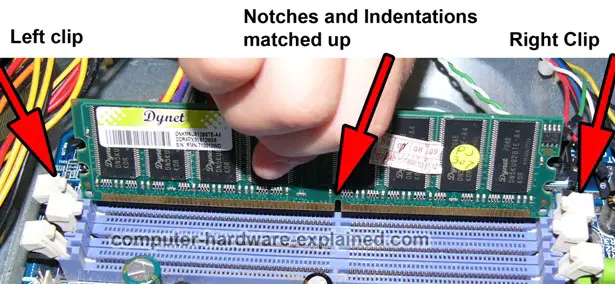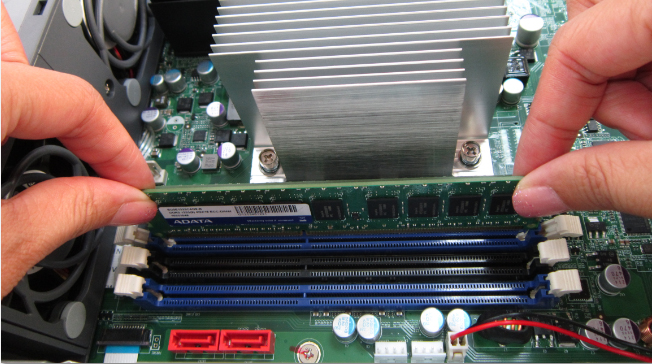MSI Bios detects all 32 gigs of ram in slots, but only uses half. Question M.2 slots: Question Frequent BSOD, Memtest86 passes and fails depending on slot config (read thread) Question All ram slots individually work, but dual channel B won't boot: Question Switching RAM slots: Question Blue screen when all ram slots in use. SuperUser reader Totymedli is curious about the color coding of RAM slots: I have always seen that the motherboard RAM slots are colored in pairs, but never knew what it meant. I just put the 2 RAM in, and after a few tries it always worked. But after I tried to install a third one it always throws me a blue screen of death. Nov 26, 2005 Apple RAM slots are very close tollerance so it takes considerable pressure to completely seat the RAM DIMMs. Use firm and even pressure being careful that you have them lined up correctly. You want to be sure that the RAM keepers snap into place. Replace the fan assembly and the clear shield and the outer casing and you should be good to go.
Your computer’s motherboard sports slots into which memory is plugged. What’s important is how those slots are filled with memory; you can’t just plug memory into the motherboard willy-nilly.
Is My Ram In The Right Slot

Understand memory slot configuration
There are several ways that a motherboard with four memory banks can host common amounts of memory: 1GB or 2GB. Because DIMMs come in different memory sizes, memory can be set up in a variety of ways inside any PC. (Note: Not all motherboards have 4 slots. Some have more, some less.)

You may have many reasons for choosing different arrangements of memory in a PC. For instance, a single 2GB DIMM an cost ten times as much as a 256MB DIMM. Conversely, a reason for using, say, two 1GB DIMMs rather than four 512MB DIMMs to get 2GB of memory is expandability. Upgrading memory is easier later, when memory slots are available.
Some PCs have a pairing requirement. The memory slots are organized in pairs, and every pair must have the same DIMM size. For example, you can have 3GB of memory in a PC with four memory banks. That’s two 1GB DIMMs in two slots and two 512MB DIMMs in the other two slots.
Yes, you may end up throwing away memory to upgrade. If your PC is configured with 1GB of memory using 4 256 MB DIMMs and you want 2GB of memory total, you have to throw away all the 256MB DIMMs and replace them with a combination of DIMMs.
Get the right DIMM
Not all DIMMs are alike. You must know the memory type, memory chip’s speed, and number of connectors, or pins.

There are several common types. Your computer uses only one memory type, and you must pick a DIMM that matches the type.
| Type | Description |
|---|---|
| DRAM | The official name of a RAM (Random Access Memory) chip: Dynamic Random Access Memory |
| DDR | A Double Data Rate RAM chip, also known as DDRRAM, which is an improvement on SDRAM |
| DDR2 | Another implementation of the DDR type of SDRAM chip |
| DDR3 | Yet another implementation of the DDR type of SDRAM chip |
| EDO | The Extended Data Out RAM chip |
| FPM | The Fast Page Mode type of DRAM chip |
| SDRAM | A type of DRAM chip, Synchronous Dynamic Random Access Memory |
| In addition to getting the right type, you also have to ensure that you buy the correct memory speed. And, finally, you have to get the right number of pins. Some DIMMs are 100-pin, some are 184-pin, and others are 200-pin. |
The easiest way to know what kind of memory you need is to use a computer program to determine how much memory is installed in your computer and how best to update. Computer programs can figure out this stuff without the need to open the computer case.
One program that works well for this purpose can be found at www.crucial.com, which also, coincidentally, sells computer memory. Visit the web-site. Use the Crucial system scanner tool; follow the directions on the web page. Eventually, it tells you exactly how to upgrade your PC’s memory.